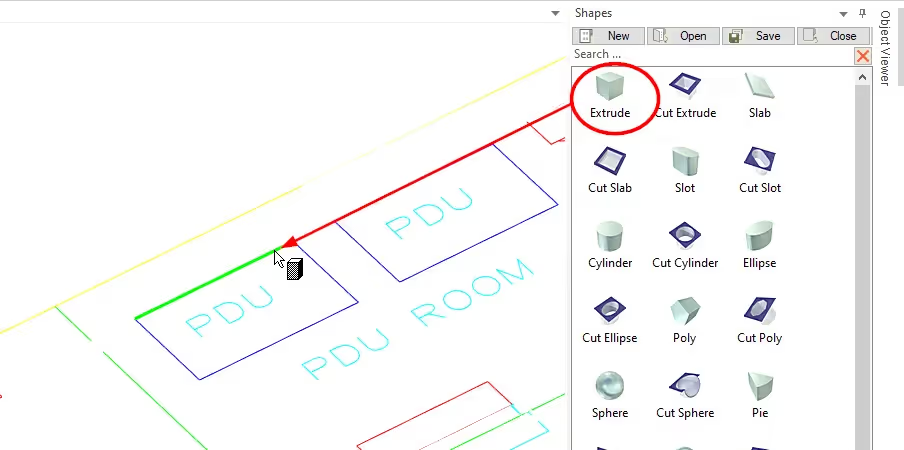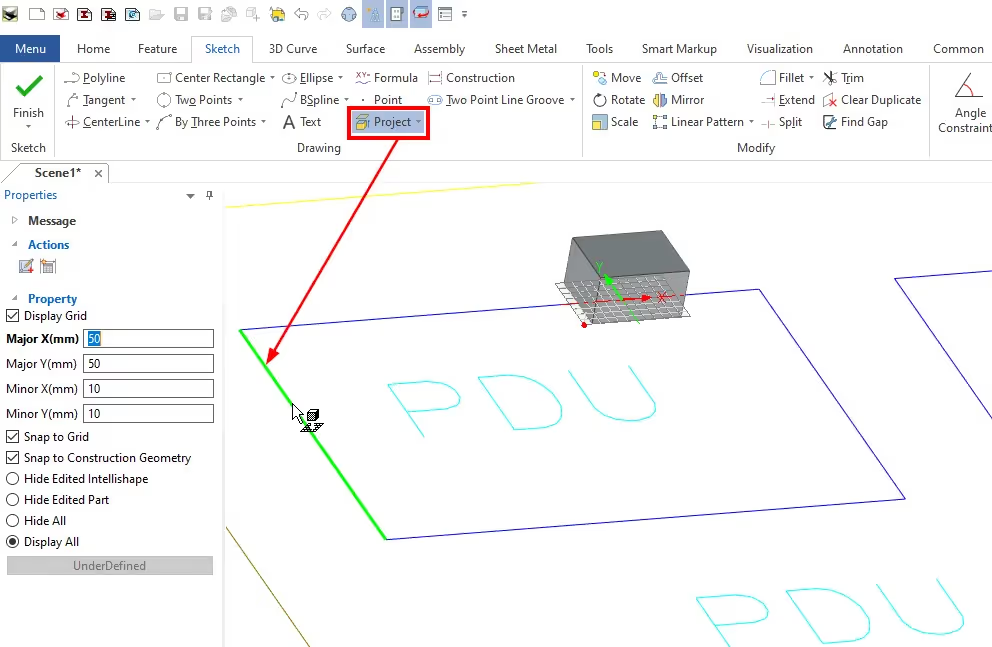Download Centre

Looks like you don't have ESC button on your device
Download IronCAD DCS
Choose one of the following options
trial versionHas a license

Emil Rindell

Jonas Bryntesson

Henrik Andersson
2023-02-09

Emil Rindell

Jonas Bryntesson

Henrik Andersson
2023-02-09
Sometimes you need to import DWG/DXF files to your 3D scene in IRONCAD to use as a reference. For example, if you want to create a virtual representation of a factory or plant in 3D and want to use a 2D base as a guide for placing machines and other equipment. The previous approach has been to import their DWG/DXF into a 2D sketch plan, but with that method it can be sluggish, especially if the file contains a lot of data.
To facilitate this, there is a function called Import Reference 2D that allows you to quickly and easily import 2D data to be used only as a reference. These items will appear in the history tree, where all layers are also available for selection, allowing you to easily show or hide certain elements when needed.
Thanks to this, you can now import large files that could previously take a very long time - in a few minutes or less.
Start by clicking on the Import Reference 2D button from the Tools tab.

Locate and open the file to be imported.

First, an overview of the 2D drawing being imported is displayed and you have the option to change the unit of measurement, delete layers, zoom, etc. When you are finished, click OK.

Then select from which "workspace", Model Space or Paper Space, the lines will be imported. The most common is usually Model, but sometimes you notice it "just blinks" and no lines came in - then you have to redo the whole procedure and choose Paper Space instead.
Apply with OK.

Then press OK to confirm that the import has been completed. If there are problems with the file, the message will indicate this.

Now we have received our relatively large DWG/DXF file for the 3D scene. In our example below, the import took less than 10 seconds.

In the tree(Scene Browser) we can choose to hide or show certain layers by right-clicking on a layer.

A convenient feature is that you can drag and drop geometry from a directory and snap to all the imported reference lines.

It is also possible to project lines from the reference file onto a sketch plane. On existing models, go down to the IntelliShape level below the Partner and right-click. There, select Edit Cross Section. You can also lay out blank sketches and project over selected lines to it.

Use the Project tool in the sketch to project the lines you need.

Answer: Here we publish tips, guides, news and solutions for those who work with IRONCAD and Design Data Manager (DDM). The blog covers everything from basic functions to advanced workflows, helping you to optimize your design work. You'll find examples of smart shortcuts, practical instructions, solutions to common problems, and best practices for product design, mechanical design, and product data management.
Answer: Our guides and tips are designed for both beginners and experienced CAD users. They are aimed at designers, engineers and project managers who want to work more efficiently with IRONCAD and DDM, improve the design process, reduce mistakes and save time in product development.
Answer: We regularly publish new articles when the software is updated, when new features are introduced, or when our users ask for solutions to specific problems. The blog is therefore a reliable source for keeping up to date and getting tips that make everyday CAD work easier.
Answer: Many of our instructions and tips work in multiple versions, but we clearly indicate if an article applies to a specific version. We strive to make the content useful for older versions as well, and also provide recommendations on how to adapt workflows to the version you are using.
Answer: Absolutely! If you can't find the solution in the blog, you can contact our technical support via solidmakarna.support. Our experts will help you with everything from installation and configuration to advanced features in IRONCAD and DDM, so you can solve problems quickly and efficiently.
Answer: Yes! We appreciate suggestions from our users. If you have questions, tips or want us to address a specific issue in IRONCAD or DDM , please contact us via our contact form and we will prioritize relevant topics in future posts.
Answer: The blog contains, among other things:
Practical step-by-step guides to help you use IRONCAD and DDM more effectively.
Productivity and workflow tips for faster design and construction.
Solutions to common problems encountered by users in CAD programs.
Updates and news on new features, versions and improvements.
Best practices for data management and project organization in DDM.
Answer: All tips and guides are directly applicable in daily work. For example, you can use shortcuts and smart features in IRONCAD to speed up modeling, structure files better in Design Data Manager, or follow our step-by-step solutions for specific problems that often come up in design projects.
Answer: We strive to ensure that all guides and tips are relevant to the latest versions of IRONCAD and DDM. We also clearly mark when a post applies to an older version, so you always know if the instruction is directly applicable to your system.
Answer: Yes! Many of our users share the articles with colleagues and use them as internal training materials. The blog is a great complement to formal training and helps teams learn features faster, avoid mistakes, and standardize workflows in IRONCAD and DDM.